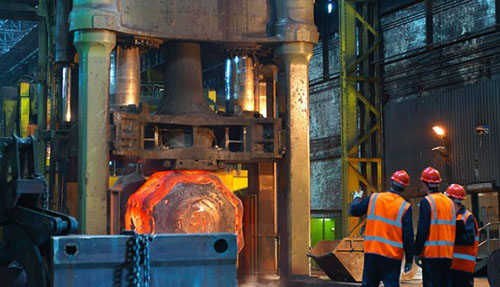
The difference between forging and stamping is as follows:
Forging is the collective name of forging and stamping. It is a forming process that uses the hammer, anvil, punch or through the die of the forging machine to apply pressure to the blank to cause plastic deformation to obtain the required shape and size of the workpiece. . In the forging process, the billet undergoes obvious plastic deformation as a whole, and there is a relatively large amount of plastic flow; in the stamping process, the billet is mainly formed by changing the spatial position of each part area, and there is no large-distance plastic flow inside it. Forging is mainly used to process metal parts, and can also be used to process some non-metals, such as engineering plastics, rubber, ceramic blanks, brick blanks, and composite materials. Rolling and drawing in forging and metallurgical industries belong to plastic processing, or pressure processing, but forging is mainly used to produce metal parts, while rolling and drawing are mainly used to produce plates, strips, pipes, General-purpose metal materials such as profiles and wires. Forging is the collective name of forging and stamping, just like industry and trade, also known as industry and trade.
Stamping processing is a production technology that uses the power of conventional or special stamping equipment to directly subject the sheet to deformation force and deform in the mold, so as to obtain product parts of a certain shape, size and performance. Sheet metal, mold and equipment are the three elements of stamping processing. According to the stamping processing temperature, it is divided into hot stamping and cold stamping. The former is suitable for sheet metal processing with high deformation resistance and poor plasticity; the latter is carried out at room temperature and is a commonly used stamping method for thin plates. It is one of the main methods of metal plastic processing (or pressure processing), and it also belongs to material forming engineering technology.
